AFRL opens SWORD lab for space warfighting operations research
Friday, 28 May 2021 03:30 The Air Force Research Laboratory Space Vehicles Directorate held a ribbon cutting ceremony May 20 to celebrate the opening of its newest facility, the Space Warfighting Operations Research and Development, or SWORD, laboratory.
Col. Eric Felt, the director of AFRL's Space Vehicles Directorate, hosted the event with AFRL commander, Maj. Gen. Heather Pringle as the presiding officer and key
The Air Force Research Laboratory Space Vehicles Directorate held a ribbon cutting ceremony May 20 to celebrate the opening of its newest facility, the Space Warfighting Operations Research and Development, or SWORD, laboratory.
Col. Eric Felt, the director of AFRL's Space Vehicles Directorate, hosted the event with AFRL commander, Maj. Gen. Heather Pringle as the presiding officer and key Air Force Deputy Technology Executive Officer Addresses Ohio Space Forum
Friday, 28 May 2021 03:30 The Air Force Research Laboratory's Dr. Kelly Hammett spoke at the annual Ohio Space Forum May 18, joining several aerospace leaders who discussed their organizations' contributions to the space mission and Ohio politicians who lauded Ohio's contributions and their economic impact.
Facilitated by the Dayton Development Coalition and JobsOhio, the Ohio Space Forum gathers federal, military,
The Air Force Research Laboratory's Dr. Kelly Hammett spoke at the annual Ohio Space Forum May 18, joining several aerospace leaders who discussed their organizations' contributions to the space mission and Ohio politicians who lauded Ohio's contributions and their economic impact.
Facilitated by the Dayton Development Coalition and JobsOhio, the Ohio Space Forum gathers federal, military, New advances inspire China's deep space exploration
Friday, 28 May 2021 03:30 With news of achievements pouring in these days, China is pushing forward its deep space exploration, aiming to contribute its wisdom in humankind's peaceful utilization of outer space.
On April 29, China sent into space the core module of its space station, kicking off a series of key launch missions that aim to complete the construction of the station by the end of next year.
The s
With news of achievements pouring in these days, China is pushing forward its deep space exploration, aiming to contribute its wisdom in humankind's peaceful utilization of outer space.
On April 29, China sent into space the core module of its space station, kicking off a series of key launch missions that aim to complete the construction of the station by the end of next year.
The s NASA's Roman Mission to probe cosmic secrets using exploding stars
Friday, 28 May 2021 03:30 NASA's upcoming Nancy Grace Roman Space Telescope will see thousands of exploding stars called supernovae across vast stretches of time and space. Using these observations, astronomers aim to shine a light on several cosmic mysteries, providing a window onto the universe's distant past and hazy present.
Roman's supernova survey will help clear up clashing measurements of how fast the unive
NASA's upcoming Nancy Grace Roman Space Telescope will see thousands of exploding stars called supernovae across vast stretches of time and space. Using these observations, astronomers aim to shine a light on several cosmic mysteries, providing a window onto the universe's distant past and hazy present.
Roman's supernova survey will help clear up clashing measurements of how fast the unive Probing deeper into origins of cosmic rays
Friday, 28 May 2021 03:30 Cosmic rays are high-energy atomic particles continually bombarding Earth's surface at nearly the speed of light. Our planet's magnetic field shields the surface from most of the radiation generated by these particles. Still, cosmic rays can cause electronic malfunctions and are the leading concern in planning for space missions.
Researchers know cosmic rays originate from the multitude of
Cosmic rays are high-energy atomic particles continually bombarding Earth's surface at nearly the speed of light. Our planet's magnetic field shields the surface from most of the radiation generated by these particles. Still, cosmic rays can cause electronic malfunctions and are the leading concern in planning for space missions.
Researchers know cosmic rays originate from the multitude of RUAG Space dispenser places 200th OneWeb satellite in orbit
Friday, 28 May 2021 03:30 On Thursday, May 27, OneWeb will launch further 36 broadband internet satellites aboard a Soyuz launch vehicle from the Vostochny Cosmodrome in Russia. OneWeb is building a communications network with a constellation of low-Earth-orbit satellites that will deliver internet access around the world.
As a key supplier to OneWeb Satellites, RUAG Space built the satellite dispenser, which funct
On Thursday, May 27, OneWeb will launch further 36 broadband internet satellites aboard a Soyuz launch vehicle from the Vostochny Cosmodrome in Russia. OneWeb is building a communications network with a constellation of low-Earth-orbit satellites that will deliver internet access around the world.
As a key supplier to OneWeb Satellites, RUAG Space built the satellite dispenser, which funct Companies and government agencies announce plans for lunar rover projects
Thursday, 27 May 2021 22:35
WASHINGTON — The Japanese and Canadian space agencies announced plans May 26 to send small rovers to the moon in the next several years, as Lockheed Martin unveiled a partnership with automaker General Motors to propose a rover for NASA’s Artemis program.
NRO taking advantage of commercial launch options for lower-risk space missions
Thursday, 27 May 2021 21:16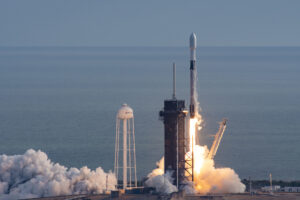
WASHINGTON — The National Reconnaissance Office entrusts the U.S. Space Force to launch most of its spy satellites. But the NRO also is using other types of commercial contracts to send spacecraft to orbit, a practice that likely will continue, the agency said.
Launch postponed for Soyuz rocket with UK telecom satellites
Thursday, 27 May 2021 19:14
The launch of a Soyuz rocket carrying 36 UK telecommunication and internet satellites has been postponed until Friday, the Russian space agency Roscosmos said.
OneWeb, a London-headquartered company, is working to complete the construction of a constellation of low earth orbit satellites providing enhanced broadband and other services to countries around the world.
The launch of the rocket operated by European company Arianespace was scheduled for 1743 GMT on Thursday from the Vostochny cosmodrome in Russia's Far East.
"For technical reasons, the launch...has been postponed to the reserve date," Roscosmos said in a statement on Thursday.
The space agency added that the postponed launch will take place on Friday, May 28 at 1738 GMT.
The launch was postponed "due to the replacement of one item of electrical equipment," launch operator Arianespace said on Twitter.
It added that the Soyuz rocket and the satellites are in "stable and safe condition".
So far two batches of 36 OneWeb satellites have been placed into orbit from Russia this year.
The UK company plans for its global commercial internet service to be operational by next year, supported by some 650 satellites.
To give astronauts better food, engineers test a fridge prototype in microgravity
Thursday, 27 May 2021 17:58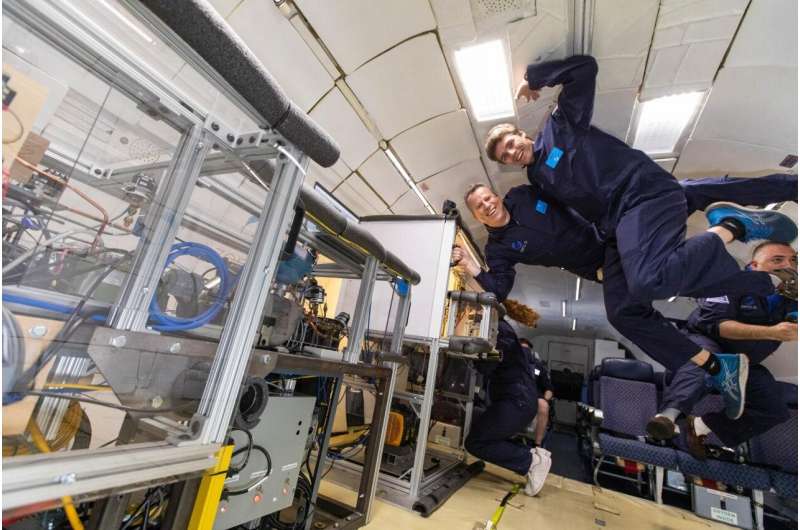
Astronauts have been going to space since 1961, but they still don't have a refrigerator to use for keeping food cold on long missions to the moon or Mars.
Through experiments conducted in microgravity, a team of engineers from Purdue University, Air Squared Inc., and Whirlpool Corporation has shown that a prototype they developed could potentially overcome the challenges of getting a traditional fridge to work in space just as well as it does on Earth.
The canned and dried food that astronauts currently eat during missions has a shelf life of only about three years. The team's project, funded by NASA's Small Business Innovation Research (SBIR) program, aims to give astronauts a supply of food that could last five to six years.
Competitor fears Musk's SpaceX could 'monopolise' space
Thursday, 27 May 2021 15:43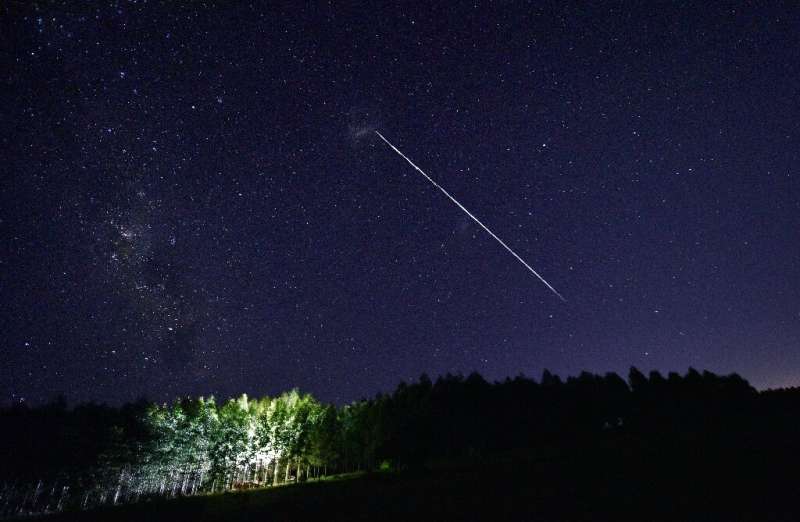
The launching of thousands of satellites into low Earth orbit by tech billionaire Elon Musk's SpaceX threatens the "de-facto monopolisation" of space, the head of competitor Arianespace Stephane Israel has warned.
Elon Musk's Starlink constellation project recently received authorisation from US regulator the Federal Communications Commission to provide broadband from space and place thousands of satellites lower than previously proposed, angering competitors including Amazon.
SpaceX, which asked the FCC for permission which will apply to some 2,800 satellites, plans ultimately to blanket poorly connected and isolated areas of the globe with internet connectivity.
ESA's Space Environment Report 2021
Thursday, 27 May 2021 15:00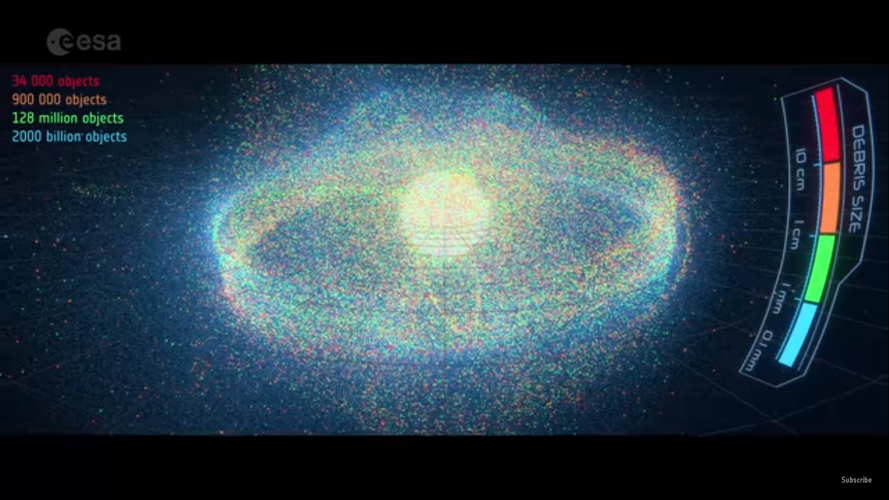
Imagine driving down a road which has more broken cars, bikes and vans lining the street than functioning vehicles. This is the scene our satellites face in Earth orbit. In fact, since the start of the space age there has been more debris, “space junk”, in orbit than operational satellites.
So how do we clean up this mess?
South Korea signs Artemis Accords; Brazil, New Zealand likely next
Thursday, 27 May 2021 13:40
SEOUL, South Korea — South Korea signed the Artemis Accords May 27, becoming the 10th signatory to the pact that governs norms of behavior for those who want to participate in the NASA-led Artemis lunar exploration program.
On the same day, South Korea and the United States signed an agreement on “civil global navigation satellite systems cooperation” under which the U.S.
Isotropic Systems closing in on multi-orbit antenna offering
Thursday, 27 May 2021 13:37
TAMPA, Fla. — British startup Isotropic Systems has unlocked more government funding for antennas it believes are timed for the satellite industry’s multi-orbit evolution.
Isotropic said May 25 it secured the final third of a previously unannounced 18.5 million euro ($22.5 million) contract from the UK Space Agency to help bring its flat-panel terminals to market early next year.
Juno returns to 'Clyde's Spot' on Jupiter
Thursday, 27 May 2021 11:24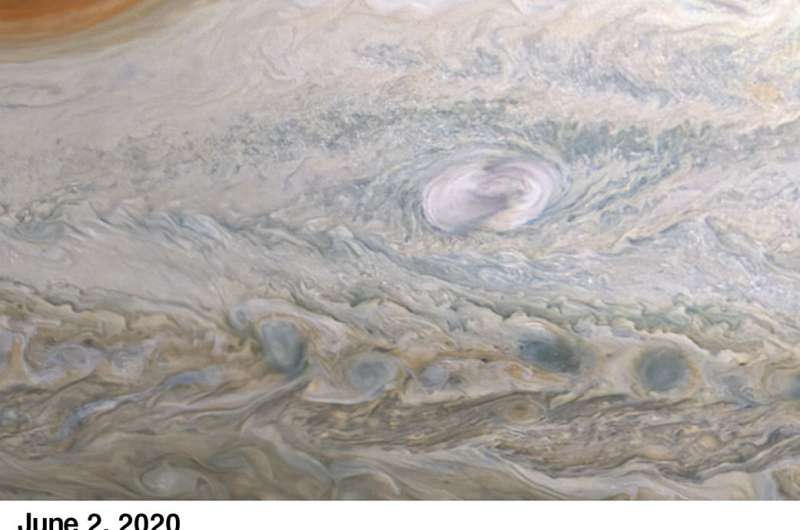
During its 33rd low pass over the cloud tops of Jupiter on April 15, 2021, NASA's Juno spacecraft captured the intriguing evolution of a feature in the giant planet's atmosphere known as "Clyde's Spot."
The feature is informally named for amateur astronomer Clyde Foster of Centurion, South Africa, who discovered it in 2020 using his own 14-inch telescope. On June 2, 2020, just two days after Foster's initial discovery, Juno provided detailed observations of Clyde's Spot (upper image), which scientists determined was a plume of cloud material erupting above the top layers of the Jovian atmosphere just southeast of Jupiter's Great Red Spot, which is currently about 1.3 times as wide as Earth. These powerful convective outbreaks occasionally occur in this latitude band, known as the South Temperate Belt. The initial plume subsided quickly, and within a few weeks it was seen as a dark spot.
Many features in Jupiter's highly dynamic atmosphere are short lived, but the April 2021 observation from the JunoCam instrument (lower image) revealed that nearly one year after its discovery, the remnant of Clyde's Spot had not only drifted away from the Great Red Spot but had also developed into a complex structure that scientists call a folded filamentary region.

